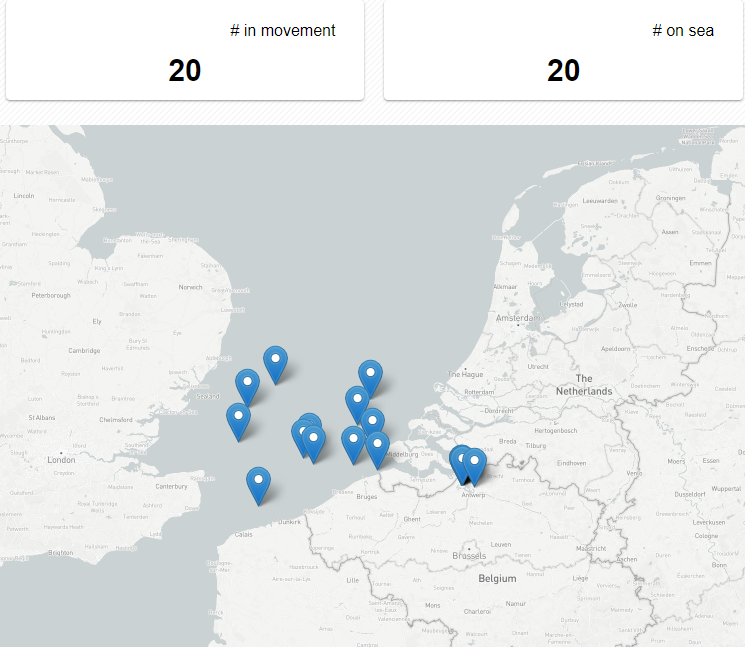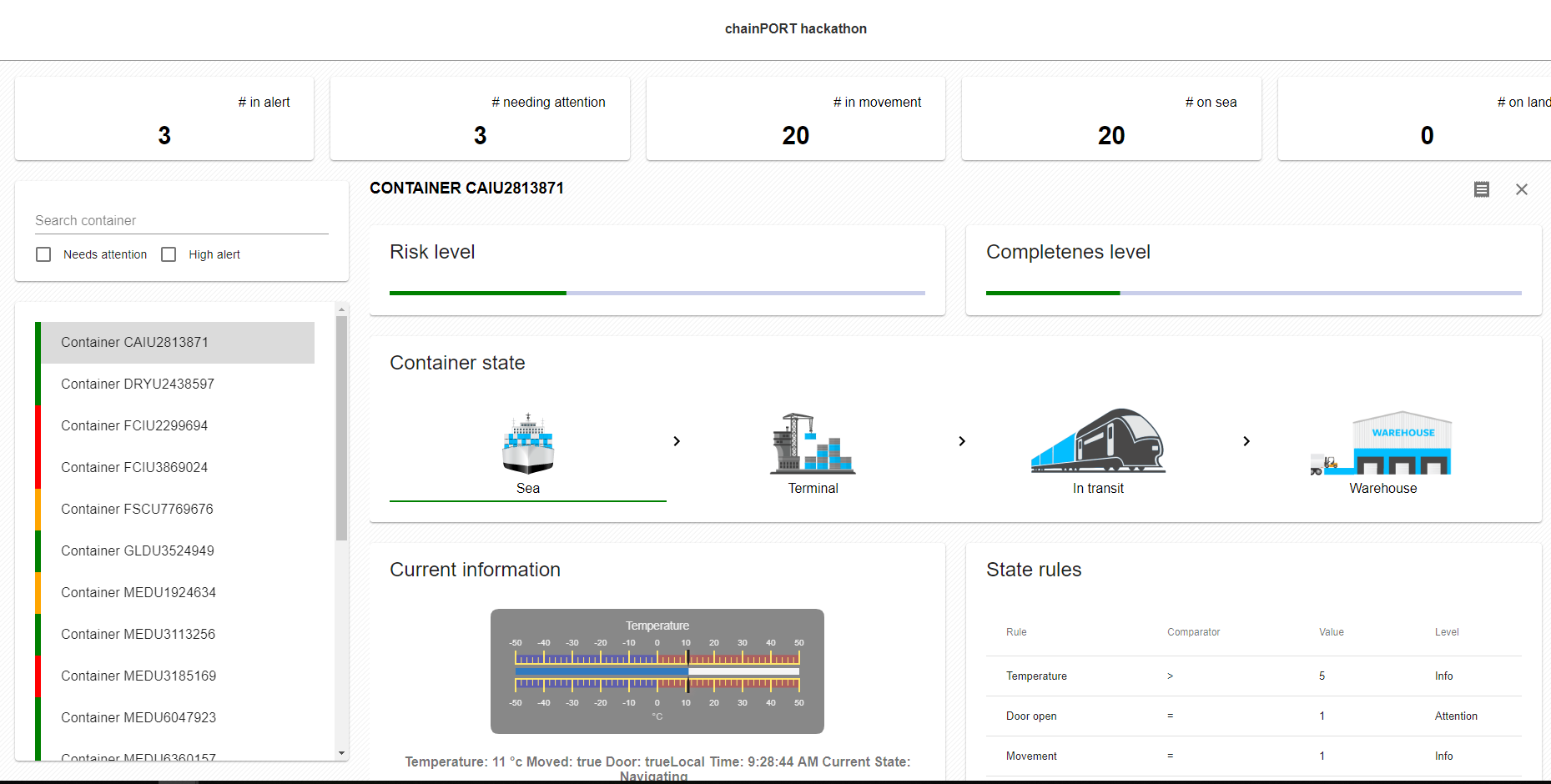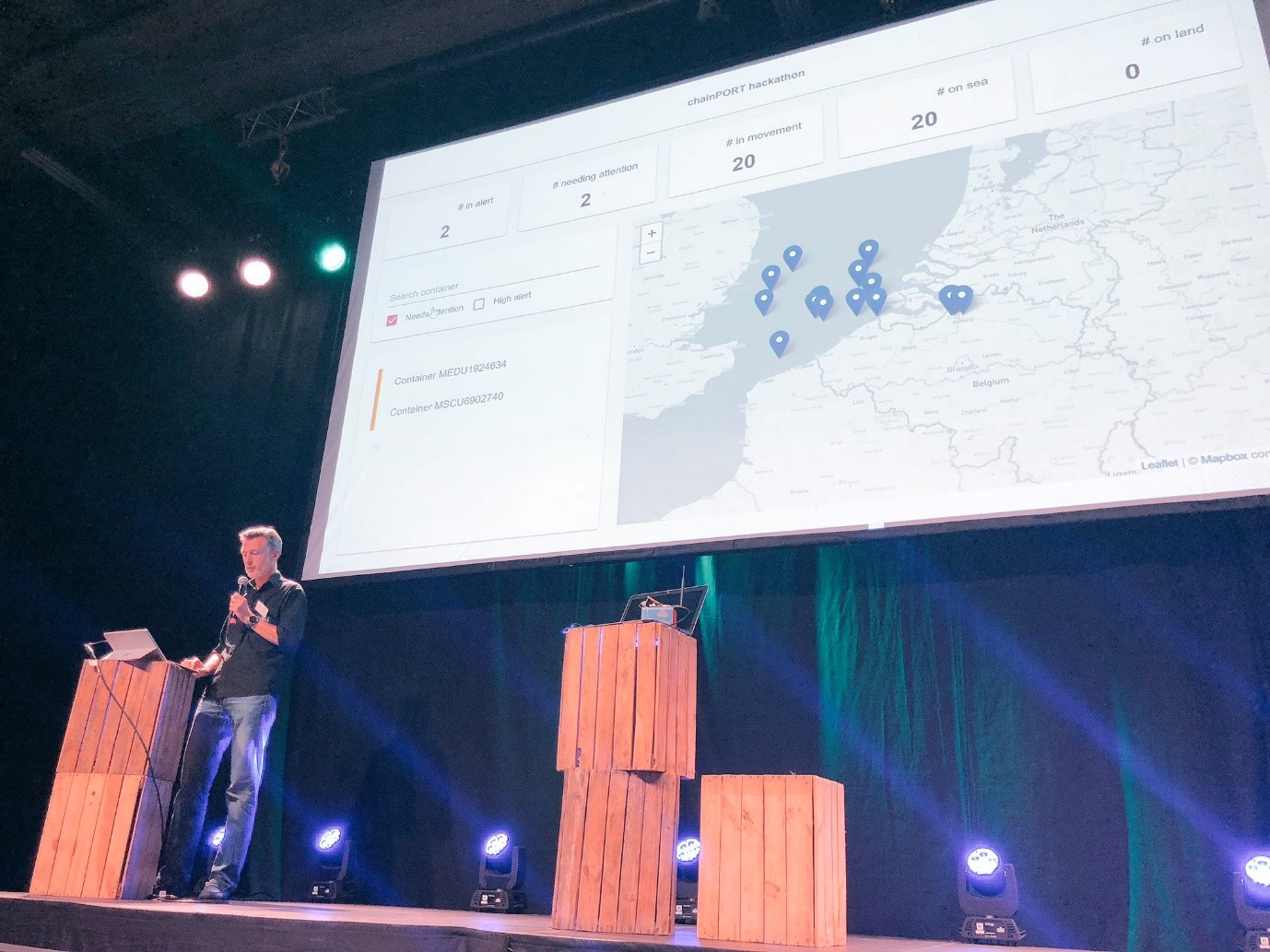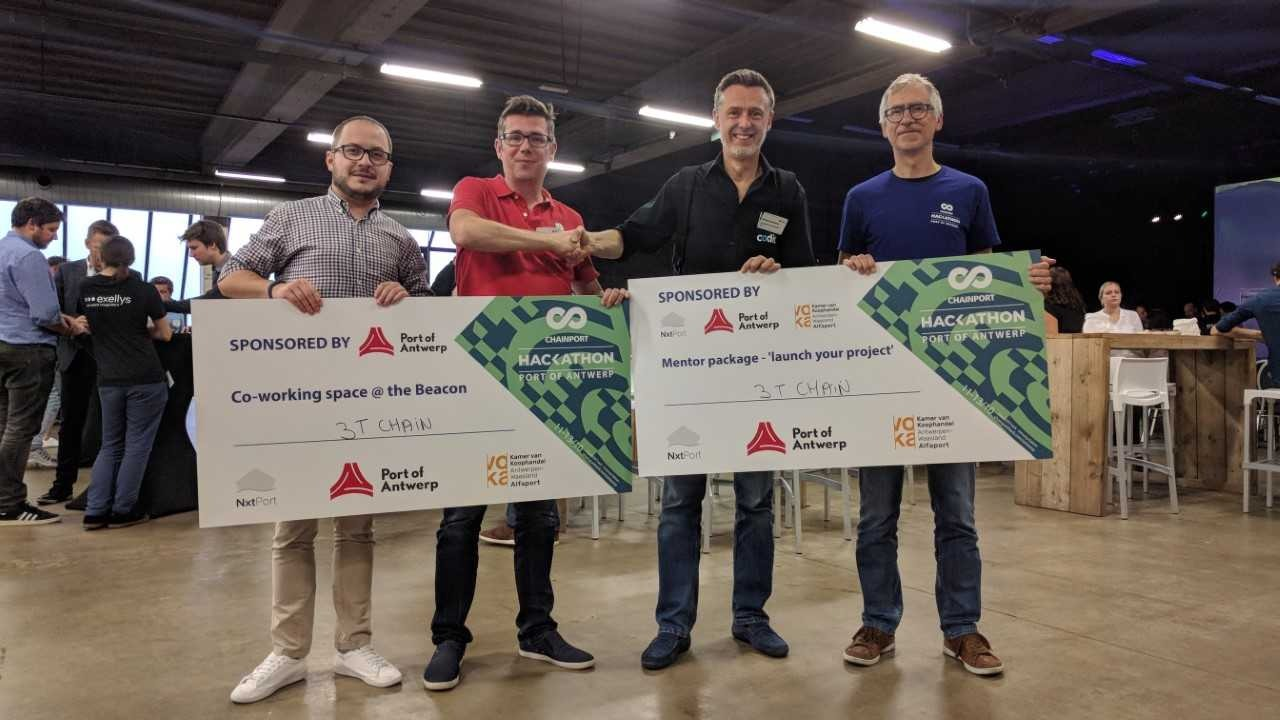ChainPORT Hackathon
The first edition of the ChainPORT Hackathon was in 2016 and was started by several World Ports to address challenges and promote collaboration across global supply chains. More than 12 port authorities, from Montreal, Barcelona to Singapore, now participate in the hackathon each year in Antwerp and Los Angeles.
The Antwerp event took place this year on Oct 11 – 13 at the Antwerp Expo. Codit, represented by Bernard Lenssens, Edward Magrin and Pieter De Vriendt, teamed up with T-Mining to solve one of the six challenges presented to us:
- Mobility – Working on an efficient and sustainable modal shift
- Inter Port – Sharing of data between world ports
- Safety and Security – Reduce drug smuggling
- Process and Document Flow – Digitalisation and document processes
- Sustainability – Use data to create synergies between energy sources
- Education and Gamification – Improve the image of the shipping industry
We decided to take on the challenge of addressing safety and security. The safety and security challenge revolves around one of the most important issues faced by Shipping ports worldwide: cocaine smuggling.
More than 30 tonnes of cocaine are seized annually by Belgian Customs, which is probably only the tip of the iceberg. The authorities are exploring how innovative and cutting-edge technologies can help stop cocaine smuggling.
Together, Codit and T-Mining developed two proposals:
- A theoretical proposal based on AI and Machine Learning. The solution uses Azure’s machine learning services to feed positives and negatives of scanned containers to move to a 100% scanning solution.
- A fully working solution based on Blockchain and IoT.
Blockchain and IoT
The first solution revolved around tracking containers as they approach the Port of Antwerp. The idea is to combine IoT and Blockchain to detect ‘suspicious’ containers as soon as possible. For example, a container can pass through different locations and organisations, with various security levels and risks. At every location, we can gather and use different kinds of data to feed into a risk profile for the container.
To keep the concept simple, four states were identified for the container:
Sea – The container is at sea.
Terminal – The container is at the terminal.
In Transit – The container is in transit by means of a truck or train.
Warehouse – The container has reached a warehouse.
To guarantee the safety and security of the container, a list of possible events and rules was set up:
Events
From sensors:
- Acceleration – is the container moving?
- Time – Is the container moving at night?
- Light / Open Doors: Has the door been opened at a strange hour?
- GPS: Location in the world, in the terminal. Is the container where it should be?
Administrative:
- Type of goods
- Positioning on ship
- Parties involved
Rules
- Door was opened (extra: location, time, number of times)
- Temperature out of bounds (extra: for dangerous goods but = safety, not security)
- Time: moving at night, short movements, inspection at a certain time
The Solution
A solution was designed based on the below architecture:

Sensors embedded into small containers were set up and connected to two Blockchains via APIs, from T-Mining and Proximus Enco. The APIs interfaced with NXTPort APIs to retrieve CUSCAR data on vessels and containers. Additionally, when a container was opened an SMS was sent to a Customs Official.

The containers were represented on a map as shown above. Each container had a risk level – based on the events, and a completeness level – based on the current state. Container state rule took the form of smart contracts on two separate ledgers: T-Mining and Proximus Enco Infrastructures.


The result was that out of 36 teams Codit and T-Mining were shortlisted in the top six. This allowed us to present the solution in front of all the participants. Despite not placing first, Codit and T-Mining were awarded two prizes in the contest – “Co-working space @ Beacon” and “Mentor package – launch your project.”


Subscribe to our RSS feed